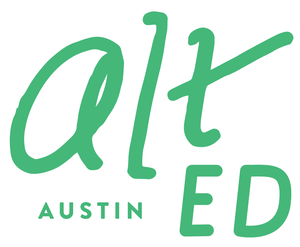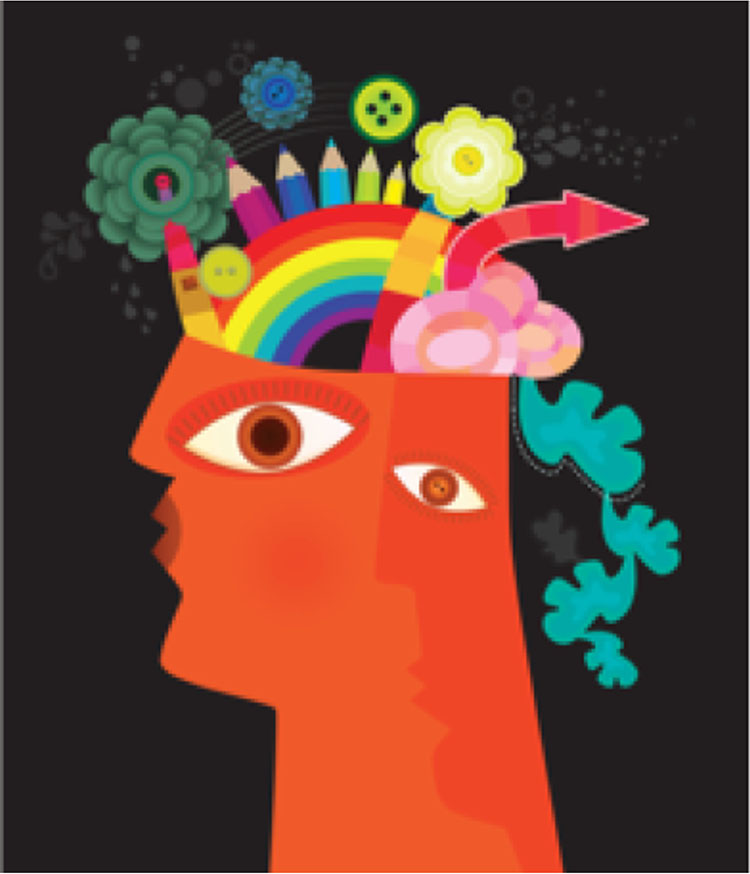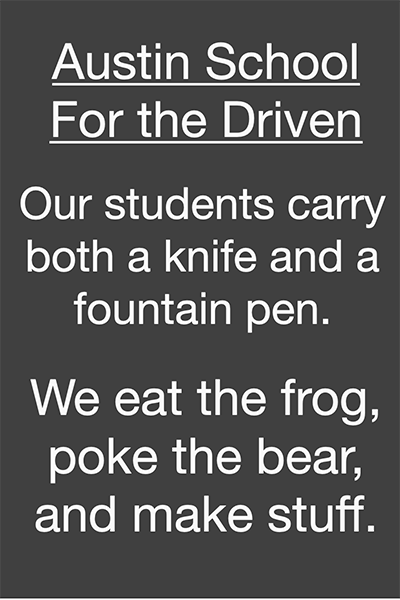Creative thinking: A fundamental skill that takes practice
/
Kelly Jarrell is an educator, program developer, counselor, and family wellness coach with more than 25 years of experience working with children, families, schools, and communities. She provides a range of services to help Austin families create success both at home and at school. Kelly joins us on the blog to share her expertise in nurturing children's creative thinking.
The term creative thinking too often is reserved for “artistic” types, or for those few who are considered “creative.” However, creative thinking is a fundamental skill, just like learning how to read. Unfortunately, the structure of our current education system emphasizes quantifiable results and productivity. This hyper-focus eliminates the space to exercise a much more qualitative, process-oriented experience for essential skill development. Creating new pathways for innovative education that meets the needs of the 21st century depends on one's concrete and deepened understanding about creative thinking:
- what exactly it is
- how it works and how it is different from other ways of thinking
- why it is important
Education is filled with buzzwords that lure us to one modality or another: higher-order thinking skills, shared inquiry, the Socratic method, executive functioning, science-based learning, metacognition, a child-centered approach, creative play . . . The list can go on and on. It is important for educators to invest time in learning what these different terms mean, how educational programs are applying them, and how they actually apply to learning. Let’s take a comparative view of two common educational terms: critical thinking and creative thinking.
In his “Introduction to Creative Thinking,” Robert Harris gives a clear explanation of the difference between critical and creative thinking and how they work together.
Much of the thinking done in formal education emphasizes the skills of analysis—teaching students how to understand claims, follow or create a logical argument, figure out the answer, eliminate the incorrect paths and focus on the correct one. [Creative thinking] focuses on exploring ideas, generating possibilities, looking for many right answers rather than just one.
Critical Thinking Creative Thinking
analytic generative
convergent divergent
vertical lateral
probability possibility
judgment suspended judgment
focused diffuse
objective subjective
answer an answer
left brain right brain
verbal visual
linear associative
reasoning richness, novelty
yes but yes and
In an activity like problem solving, both kinds of thinking are important to us. First, we must analyze the problem; then we must generate possible solutions; next we must choose and implement the best solution; and finally, we must evaluate the effectiveness of the solution. As you can see, this process reveals an alternation between the two kinds of thinking, critical and creative.
Critical thinking is classification, analysis, comparison, inductive and deductive reasoning, concluding answers. It is linear, sequential. Creative thinking is brainstorming, imagining multiple possibilities. It is metaphorical, associative. In today’s world, where information and knowledge are changing and expanding at an accelerated rate, our education system must shift to developing citizens that have skill sets to adapt to such a world in proactive, constructive ways.
Sir Ken Robinson is one who has dedicated his life work to doing just that. In his Changing Education Paradigms animation, he defines creativity as “the process of having original ideas that have value.” He shares research that illustrates how creative “Genius” is strongest in young children (which means we all have this capacity), and slowly deteriorates as children get older (which means the capacity is somehow lost). This point brings us back to where we started. Creative thinking is a skill that needs to be developed, nurtured, practiced, and exercised to become stronger and readily utilized.
In the book New World Kids: The Parents' Guide to Creative Thinking, authors Susie Monday and Susan Marcus provide simple yet comprehensive ways to support children in developing their creative process.
It’s not a matter of chance or talent or luck, creative thinking is a matter of focus and practice. Like reading, it’s a skill that is learned by doing. Inborn imagination and natural creativity become fluent thinking tools when children learn to see patterns, use associative thinking and practice creating. Also, just like reading, adults help kids along by supplying the right challenge at the right time. (p.9)
The book identifies “a Creativity Map” (p.17) that includes these components:
- Imagination: “the more you feed your imagination with observations and experiences and memories, the richer and wiser your imagination becomes”
- the Sensory Alphabet: a sensory language that provides a new perspective for witnessing the world in order to discover new patterns
- media: “anything you use to get your ideas from the inside of your brain out into the world”
- play: “thinking in action”
- Individuality: recognizing the metacognitive aspects of each person
- the creative process: 1) collecting or gathering; 2) playing; 3) creating; 4) reflecting
Monday and Marcus describe the NWK approach to practicing this process as follows:
The process begins as children find and identify ideas through observation and interaction with the world around them, using the elements of the Sensory Alphabet as lenses. Next they experiment and play with these ideas to help them “grow.” Creative products emerge and are photographed or saved in a personal portfolio. Finally, children learn more about their creative selves as they reflect on their experiences and choose favorite elements, materials and activities.
The Sensory Alphabet—color, sound, light, space, movement, rhythm, line, shape, texture— is a sensory language that provides a new set of lenses to see the world, which enables new patterns and relationships to emerge that were previously clouded by cultural and learned preconditions. “Because this sensory vocabulary describes, but doesn’t define, it enlarges the capacity for seeing patterns between disparate objects, fields and cultures. This ability to perceive patterns is one of the hallmarks of a creative mind” (p.27).
With my own educational background anchored in this process of learning, I quickly recognized its absence when I stepped into the classroom as an elementary educator. My students had plenty of imagination about ideas that were “outside the box” of possibilities. But their ideas fell short of how to transform them into something beyond a diorama or poster board. Elementary is a time for Big Work, but my students were stuck—they couldn’t imagine how to create Big Forms for communicating their ideas. I realized they needed to practice the creative process, to focus on the process regardless of the content, to experience the Sensory Alphabet in order to make new connections. And that is what we did.
We first exercised our ability to recognize sensory language. We explored different kinds of materials and media (not technological). We then chose topics of interest (whatever they wanted) and practiced different ways of sharing information they discovered. Then we chose a collective topic and picked different ways to communicate our new knowledge. We exercised all aspects of the creative process to build the mental muscle. Students had a heightened engagement in their work and expanded their ways of approaching it.
As educators, parents, neighbors, and active community members, we all need to nurture and exercise our creative thinking skills to provide the fodder necessary for creating a collaborative, innovative, inclusive, diverse, collective, productive, world in the 21st century. What ways can you begin exploring this week? I am available to listen, share thoughts, and provide ideas for starting places in your learning community.
Kelly Jarrell

























